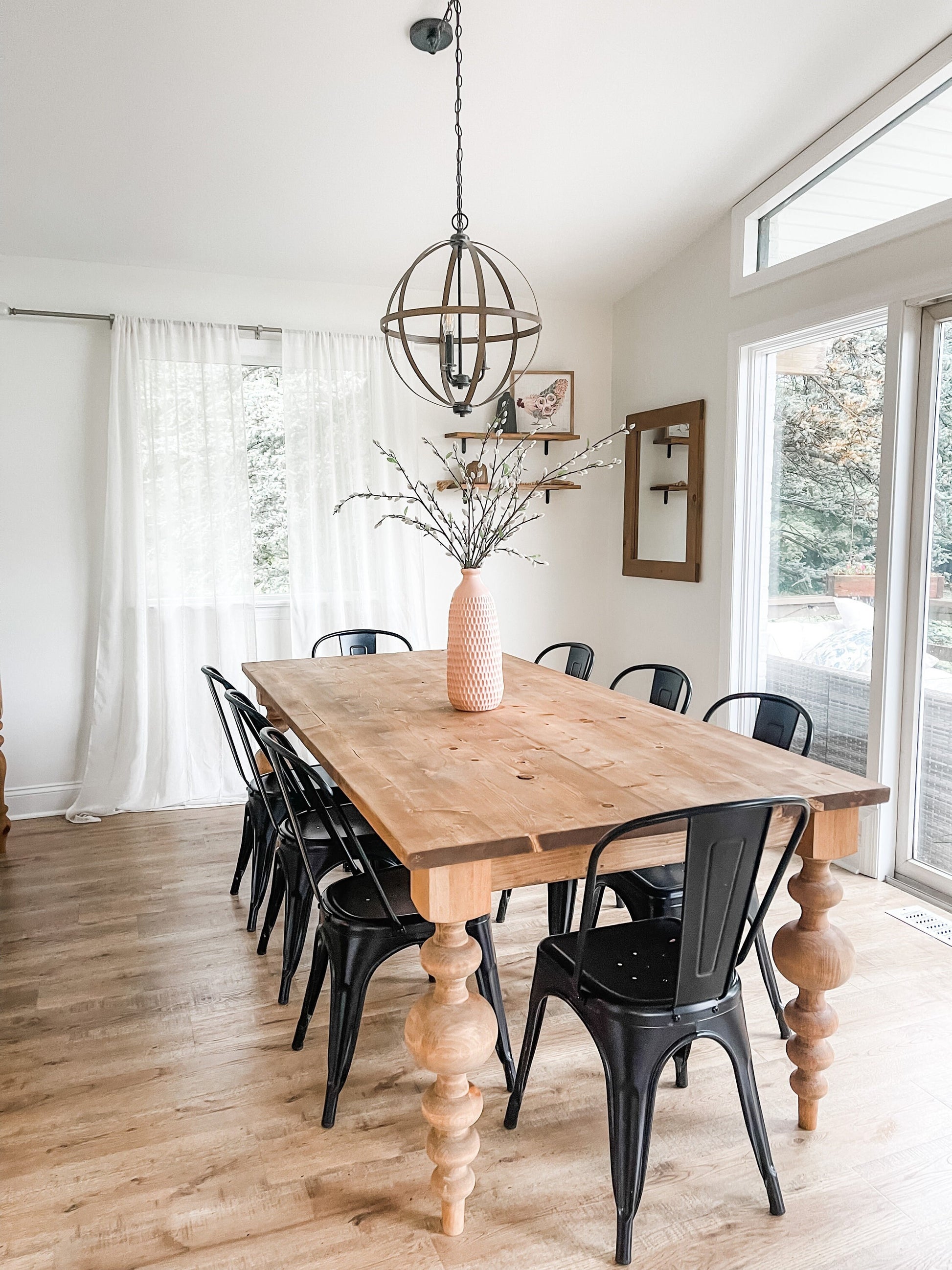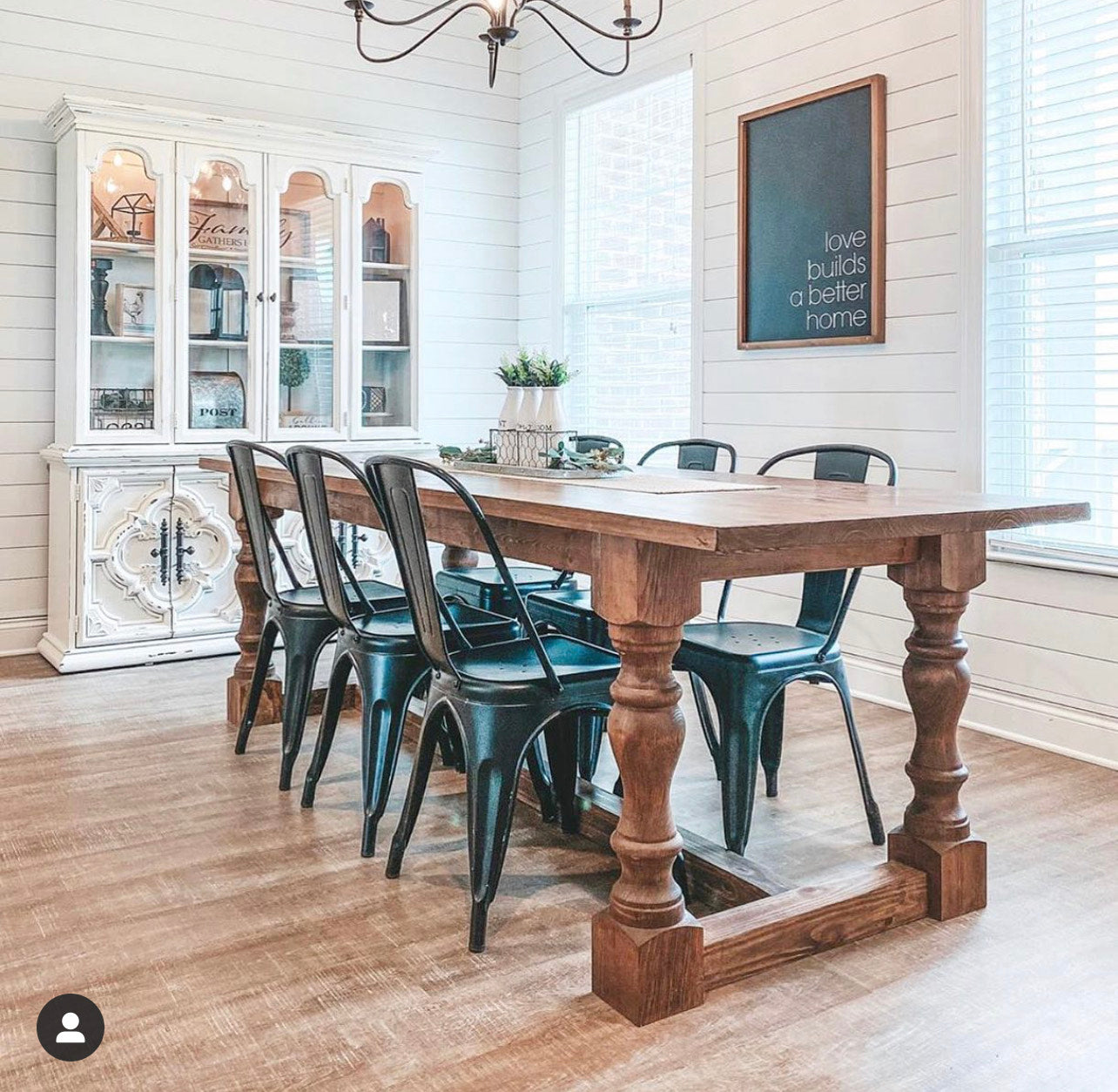Simple Steps to Replacing Old Dining Room Table Legs with New Ones
Simple Steps to Replacing Old Dining Room Table Legs with New Ones
Blog Article
From Conventional to Modern: Discover the Perfect Dining-room Table Legs for Your Design
The choice of dining-room table legs plays a crucial duty in defining the overall personality of your area, bridging the space in between traditional workmanship and modern aesthetic appeals. While classic designs such as cabriole and turned legs evoke a feeling of classic refinement, modern styles like hairpin and geometric alternatives provide an opportunity for striking aesthetic passion. Examining the appropriate balance in between these styles needs a nuanced understanding of your existing décor and personal taste. As you consider these aspects, the question remains: just how can you flawlessly integrate these diverse leg styles to develop a harmonious eating experience?
Comprehending Table Leg Styles
The selection of dining-room table leg styles can dramatically influence both the looks and performance of the area. Each leg style adds one-of-a-kind visual components and sensible features, providing to varied layout preferences and use demands. Recognizing these styles is essential for picking the ideal dining table that lines up with your general interior decoration vision.
As an example, tapered legs offer a tidy, timeless look that can enhance an area's beauty, while pedestal bases offer security and optimize legroom, making them optimal for smaller sized spaces. Barrette legs, a hallmark of mid-century modern-day style, present a commercial panache, allowing for an airy, open feel. Trestle legs stimulate rustic appeal, offering robust support and a sense of timelessness.
Wood legs can bring heat and texture, whereas steel alternatives often communicate a streamlined, contemporary vibe. Inevitably, understanding table leg styles is vital for producing a cohesive eating area that reflects individual style while guaranteeing practicality and comfort.
Conventional Table Leg Options
When selecting dining area table legs, typical alternatives typically personify classic style and craftsmanship. These styles reflect a rich heritage and a commitment to quality, making them excellent for those who appreciate timeless aesthetics.
Among one of the most famous typical leg styles is the cabriole leg, defined by its graceful bent shape. This design usually features decorative makings and is most typically discovered in Queen Anne and Chippendale furnishings. An additional popular alternative is the transformed leg, which flaunts a collection of smooth, rounded shapes that supply a timeless look while maintaining security.
Moreover, the straight leg, while easy, offers a durable and unadorned framework that can mix effortlessly with a variety of tabletop designs. For those attracted to ornate outlining, claw-and-ball feet legs stimulate a feeling of majesty and can work as a magnificent focal factor in any kind of eating room.
Last but not least, pedestal bases, although not strictly legs, supply an alternate standard option that permits sufficient legroom and can be magnificently sculpted. Each of these typical leg styles contributes to the total setting of an eating area, marrying feature with aesthetic appeal.

Modern Table Leg Designs
Modern table leg styles supply a diverse variety of styles that highlight tidy lines and click now innovative products. These styles commonly prioritize functionality while functioning as striking prime focus within a dining area. Minimal appearances are prevalent, with legs crafted from materials such as metal, glass, and crafted wood, which add to a airy and modern feel.
One popular style is the hairpin leg, characterized by its slender, tapered structure that offers security without overwhelming the table top (dining room table legs). This style is frequently found in mid-century modern furniture and can effortlessly complement different table forms. Another fad is the usage of geometric shapes, where legs might tackle angular or asymmetrical types, adding aesthetic passion and a touch of virtuosity

Blending Styles for Distinct Areas
Usually, home owners look for to develop unique dining spaces that show their individual style by mixing different style components. This approach enables for the incorporation of diverse visual appeals, leading to an unified yet distinct atmosphere. Combining a rustic wooden table with sleek, modern metal legs can develop an eye-catching contrast that boosts the space's overall charm.
Furthermore, integrating more tips here vintage table legs with modern tabletops can stimulate a sense of history while preserving a contemporary perceptiveness. Such mixes not only showcase private preference however also encourage creativity, enabling property owners to curate a room that feels both individual and inviting.
Shade plays an essential function in this mixing process; selecting table legs that enhance or comparison with the existing shade system can boost visual rate of interest. For instance, whitewashed legs can soften the daring of a dark table surface, producing a well balanced visual.
Tips for Picking the Right Legs
Choosing the right table legs is essential for achieving both performance and visual charm in your dining area. Begin by thinking about the total design of your area. Conventional setups gain from legs that feature elaborate carvings or turned styles, while modern spaces might ask for sleek, minimal styles.
Next, analyze the elevation and security of the legs. dining room table legs. Standard dining tables range in between 28 to 30 inches in height, so make certain the legs match this measurement for convenience. Additionally, durable products, such as wood or metal, can enhance security and durability
Examine the leg form as well-- alternatives include directly, tapered, or stand styles. Straight legs use a timeless look, while tapered legs can add a touch of style. Pedestal bases offer sufficient legroom and are excellent this content for smaller sized areas.
Verdict
In summary, picking the optimal dining-room table legs needs mindful factor to consider of both contemporary and typical designs. Typical choices such as cabriole and turned legs offer ageless beauty, while contemporary designs like hairpin and geometric shapes supply a contemporary touch. By integrating leg design, elevation, and product with the general décor, a cohesive and inviting ambience can be accomplished. Eventually, the chosen table legs ought to reflect the wanted visual, improving the eating experience within the area.
The range of dining room table leg styles can significantly influence both the aesthetics and performance of the room. Ultimately, comprehending table leg designs is important for creating a natural eating area that mirrors personal style while making certain functionality and convenience.One of the most legendary conventional leg designs is the cabriole leg, characterized by its graceful curved form. Straight legs offer a timeless look, while tapered legs can include a touch of sophistication.In recap, choosing the excellent eating area table legs requires mindful factor to consider of both conventional and modern-day styles.
Report this page